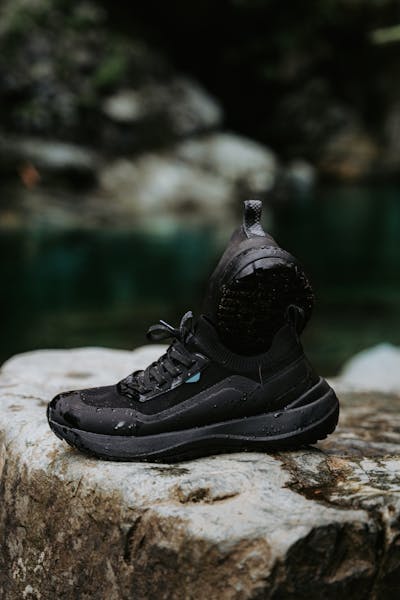Choosing the right running or trail shoe can transform your experience, enhancing both comfort and performance. Whether you’re navigating rocky terrains or smooth roads, understanding the unique features of popular models can be the key to a smoother stride. This guide reviews the best options, providing expert insights, user experiences, and essential care tips, ensuring you make an informed choice tailored to your running needs.
Comprehensive Review of Running and Trail Shoes
When it comes to selecting the best running and trail shoes, blending performance and comfort is paramount. As highlighted in https://run-hero.com/, the top road-to-trail picks strike a balance between cushioning and durability, ensuring suitability across varied terrains. Several models excel in specific aspects like grip, responsiveness, and stability, catering to diverse runner profiles.
Additional reading : Boost Your Golf Game: The Ultimate Guide to Strength Training for Longer Drives
Road-to-Trail Versatility
For runners navigating hybrid terrains, shoes like the Hoka Challenger 7 stand out due to their plush cushioning and stability, making transitions between roads and simple trails seamless. Similarly, the Nike Pegasus Trail 5 features its updated React X foam midsole, benefiting those new to trail running. Its compromise in traction on technical paths, however, might limit its utility for advanced trails. Models like the Merrell Morphlite provide affordability without sacrificing moderate trail performance, although they may struggle with technical challenges.
Technical Trail Champions
For rugged terrains, options like the Salomon Speedcross 6 dominate with aggressive lugs ensuring elevated grip, especially on rocky or muddy surfaces. The Hoka Speedgoat 6 integrates comfort with stability, while the Saucony Peregrine 14 impresses on varied terrains with ample traction. Despite these strengths, these models may not suit road sections due to their design focus on trail grip and protection.
Topic to read : Strength Training for Dancers: A Safe and Effective Guide to Enhancing Your Routine
Specialized Features and Insights
Shoes like the Altra Outroad, favoring a wider toe box and zero-drop design, cater to minimalist runners. However, these may feel restrictive for other foot shapes. Meanwhile, winter-friendly picks such as the Merrell Agility Peak 4 GTX address wet terrains with superior waterproofing but bring bulkier profiles. Care considerations such as shoe cleaning and waterproof reproofing further optimize longevity of these high-performance options.
In summary, exploring models suited for your terrain and running style is integral to achieving both comfort and efficiency.
Performance Analysis and Comparisons
Insights on Weight and Cushioning
In a cushioned running shoe analysis, the Hoka Challenger 7 stands out with its plush padding, making it well-suited for long-distance runs. Contrastingly, the Salomon S/LAB Ultra 3 focuses on responsiveness rather than cushioning, catering more to technical terrains. The Nike Pegasus Trail 5, featuring the React X foam midsole, bridges the gap between road and trail surfaces while balancing weight and protection.
For minimalist preferences, models like the Altra Timp 5 with zero-drop cushioning deliver a natural running experience. However, newcomers may require adjustment time due to a lack of midsole height. Shoe weight comparisons in testing consistently favor lighter models such as the Hoka Zinal 2, enhancing agility over shorter distances.
Assessment of Traction Across Different Terrains
Traction performance in trail shoes varies significantly depending on terrain. The Hoka Speedgoat 6 excels in muddy or rocky routes due to its aggressive lug pattern, while the Saucony Peregrine 14 provides versatile grip across technical and moderate trails. For winter-friendly use, the Merrell Agility Peak 4 GTX effectively handles wet conditions with its specific outsole design.
Long-Distance Running Shoes: Performance vs. Comfort
In testing running shoe comfort ratings, the Scarpa Spin Infinity combines padded midsoles and structured design for fatigue reduction over extended sessions. Shoes like the Nike Zegama 2 prioritize longer-lasting comfort but may overheat in warmer climates, proving less effective in balancing all-day use.
Recommendations for Different Types of Runners
Best Trail Shoes for Rugged Terrain
When tackling rugged terrains, choosing the best trail running shoes can significantly impact your performance and safety. For long-distance runs or variable conditions, the Hoka Mafate Speed 4 offers a blend of comfort and grip, excelling on both rugged trails and smoother paths. Its 36mm stack height provides ample cushioning without compromising responsiveness. Similarly, the Salomon Speedcross 6 stands out for its aggressive lugs, making it a top pick for technical trails, though less suited for flatter terrains.
If you’re seeking versatility in trail conditions, the Saucony Peregrine 14 combines a familiar road-shoe-like fit with enhanced traction for off-road surfaces. While its lugs favor technical runs, they may feel bulky on paved routes. For lightweight durability, the La Sportiva Bushido III remains a favorite, offering stability on uneven ground; however, its slow-drying upper could challenge wet-weather runs.
Minimalist runners may find the Altra Lone Peak 8, with its spacious toe box and zero drop, appealing for rugged paths. Although it requires an adjustment period, it caters well to natural running styles. These options ensure solid traction and injury prevention measures with footwear, even in the harshest environments.










